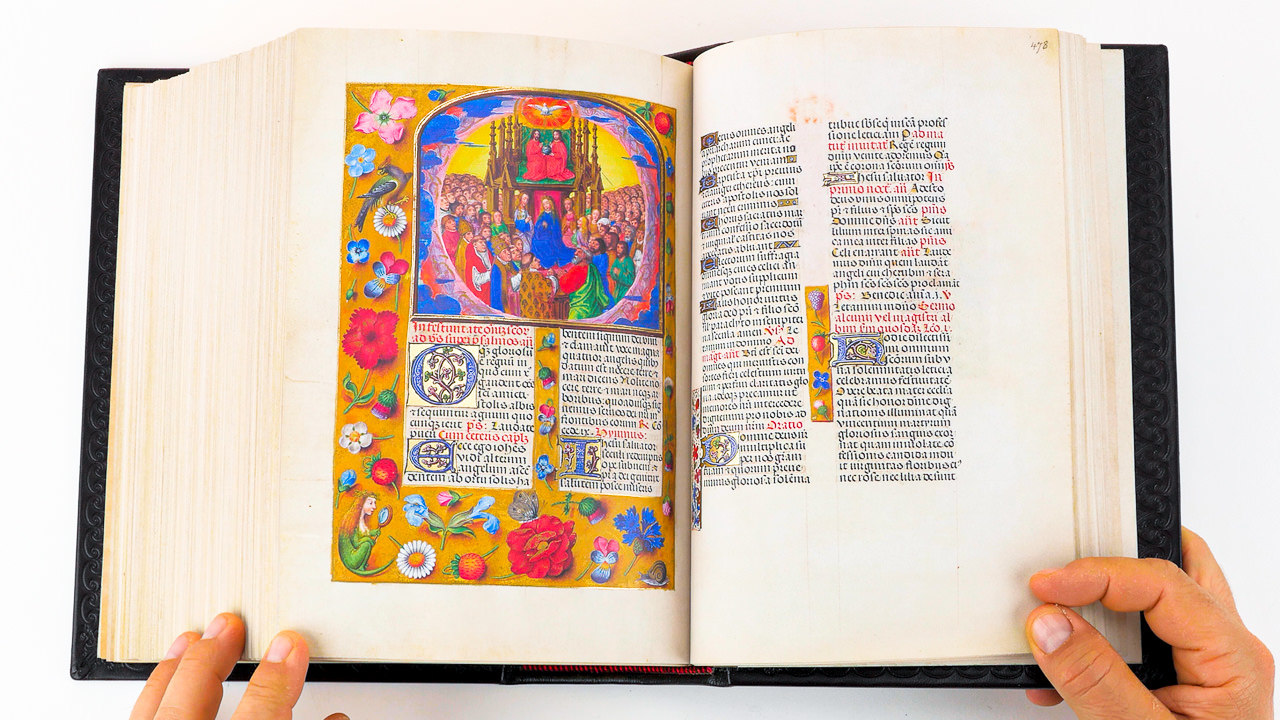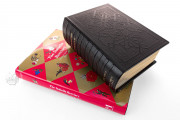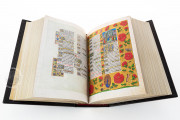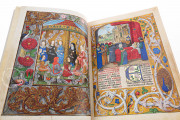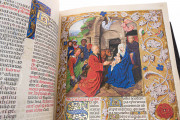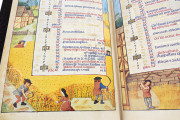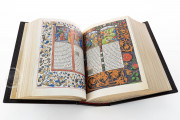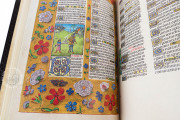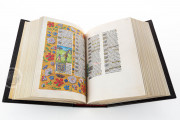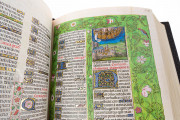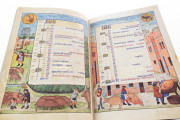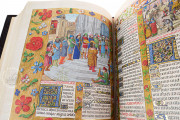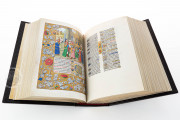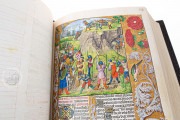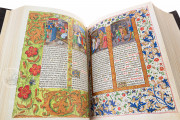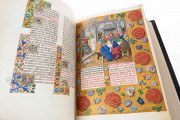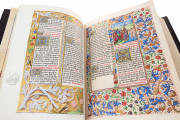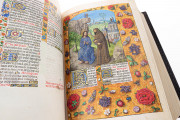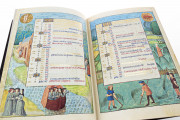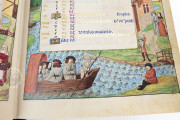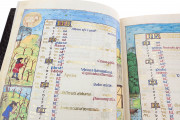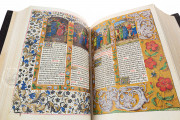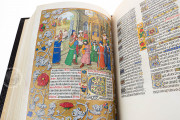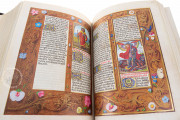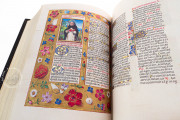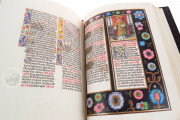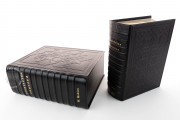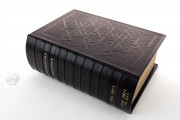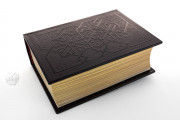The Isabella Breviary is a beautiful Northern Renaissance manuscript from Belgium. The codex, also known as Breviario de Isabel la Católica, was written and illuminated towards the end of the fifteenth century and features beautifully illuminated full-page miniatures, several exquisite two-column miniatures, countless one-column miniatures, and six exquisite historiated initials. With its neat and precise use of colors, the manuscript is justly considered a Flemish masterpiece.
Two Iconographic Campaigns
Written in Latin, the codex features an outstanding iconographic apparatus that was almost certainly produced in two campaigns. The first one, dated around the mid-1480s, includes illuminations by artists such as the Master of the Dresden Prayerbook (to him can be attributed almost all miniatures from fols. 8v to 258r), Gerard David (fols. 29r, 41r, 297r), and another unknown artist.
Four of the miniatures are particularly significant given their quality and attribution: the Nativity Scene (fol. 29r), the Adoration of the Magi (fol. 41r), St. Barbara (fol. 297r), and John on Patmos (fol. 309r), all created by Gerard David. The abundant color palette and the glossy surface set these four miniatures apart from the rest, making them an exquisite example of Flemish art.
The Master of James IV of Scotland
The second campaign, dated before the end of the fifteenth century (ca. 1497), includes the remainder of the miniatures, which were all created and illuminated by the Master of James IV of Scotland. About fifteen miniatures were added in later centuries between Spain and England.
A Royal and Diplomatic Gift
The life of the manuscript is an interesting one. Indeed, the book was commissioned as a gift from Francisco Rojas, ambassador of Maximilian I, to Isabella I of Castile and consort of Ferdinand, King of Aragon and Sicily on the occasion of the negotiation of a double wedding between the offspring of Isabella and Ferdinand and that of Maximilian I.
In 1815, the manuscript ended up among the possessions of John Dent, a member of the parliament; after his death, the codex was passed from one owner to another until it was sold to the British Museum by William Boone along with the Bedford Hours.
Gothica Textura Rotunda
The Isabella Breviary bears an exquisite example of Gothic script, namely Gothica Textura Rotunda, characterized by the bottom of the minims curved upwards in a cursive manner. However, it is to be noted that this example does not seem to be written at a fast pace like cursive.
Unfortunately, like many other medieval manuscripts, the Isabella Breviary lost its original binding, replaced in the nineteenth century with a blind-tooled dark brown leather binding by Charles Henrig.
We have 1 facsimile edition of the manuscript "Isabella Breviary": Breviario de Isabel la Católica facsimile edition, published by M. Moleiro Editor, 2010
Request Info / Price
